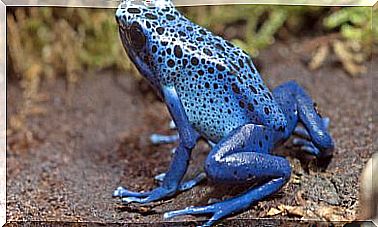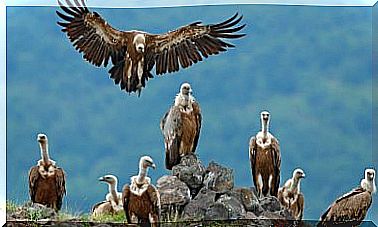The Fauna Of The Great Barrier Reef
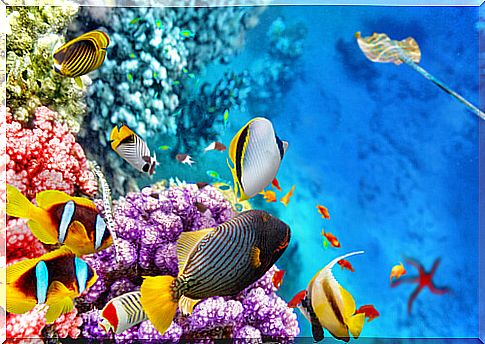
The Great Barrier Reef is the largest submerged habitat on the entire planet. It is so large that astronauts say it can be easily distinguished from space. Hundreds of animal species inhabit this great natural space, so we invite you to discover the fauna of the Great Barrier Reef.
The great coral barrier
The Great Barrier Reef is located in Oceania, specifically northeast of Australia. It is difficult to calculate its specific area, but it is more than 2,600 kilometers long: it is not actually the same reef, but the union of more than 2,000 individual corals and almost 1,000 islands.
It is sometimes mentioned that this ecosystem is the largest living thing on the planet: thanks to its large size, its mild and friendly climate, and its geographical location, one of the largest known concentrations of diversity can be found in this place .
In the Great Barrier Reef there is not only life under the sea: thanks to the submanine activity many species of birds survive. In addition, we must take into account the animals that live both on land and in the sea, such as crocodiles or turtles.
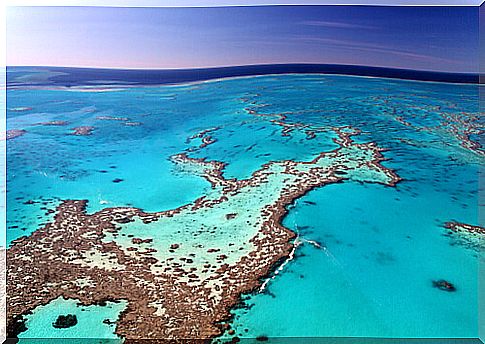
The protection of natural parks
The Great Barrier Reef was declared a protected natural park in 1875 and a World Heritage Site in 1981. This implies that it is legally protected against the alteration or destruction of a large part of its extension.
It is an area of the planet that is especially attractive for diving enthusiasts and tourists. Thanks to this declaration of protection, all human activities are regulated : for example, boats are not allowed to dock on top of corals and the passage of tourism is limited.
In addition, fishing is prohibited, so all the animal species that proliferate in this ecosystem can live and reproduce without feeling threatened. This is vitally important, as some of the living things on the Great Barrier Reef are in danger of extinction.
The fauna of the Great Barrier Reef
In this unique place, life proliferates: both animal and vegetable. Some of the animals that live on this reef are migratory, but many others spend their entire lives on it, and are even endemic, that is, they do not live anywhere else on the planet. Some of the species that can be found are the following:
Cetaceans and other large mammals
Humpback whales, one of the largest cetaceans in existence, are part of the fauna of the Great Barrier Reef, as they come to breed. Also appear this dolphins, the dwarf minke whale, the pink dolphin Hong Kong and dugongs.
They are not cetaceans, but they are large marine animals: almost thirty sharks and rays appear in these waters. The white shark, the tiger shark and even the hammerhead shark are inhabitants of this ecosystem.
Sea turtles and crocodiles
Six species of sea turtles have been counted, among them the hawksbill and leatherback, in critical danger of extinction. In addition, saltwater crocodiles live in the mangroves near the reef and benefit from it.
Some 15 species of sea snakes also live among the fauna of the Great Barrier Reef. They can be found even 50 meters deep. They are descendants of terrestrial species, and can reach eight feet in length.
Fish and small marine fauna
There are more than 1,500 species of fish living in its waters. Some are as surprising as the frogfish or the wrasse, or as well known as the clownfish or the blue surgeon. They come in all sizes and colors: many are very striking and have unique colors, such as the Mandarin fish.
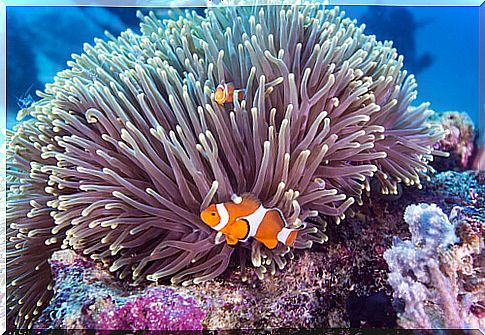
Nine different species of seahorses have also been counted. There are 400 species of mollusks, 1,400 varieties of coral, and plankton is so abundant that humpback whales come to feed in its waters. Among the most amazing mollusks on the Great Barrier Reef are the giant clams.
Sea birds
More than 20 species of seabirds live throughout the reef, in addition to almost 50 species of shorebirds, which feed in the sea, but nest on the islands that surround it. In addition, about thirty species of migratory birds pass through this place on their travels.
The Great Barrier Reef is considered the largest living being on the planet, thanks to the great biodiversity found under and on its waters. It has been protected by law for almost half a century and, despite this, its health continues to be threatened. Taking care of the ocean is everyone’s responsibility, and especially the ecotourists who go to such special places.




